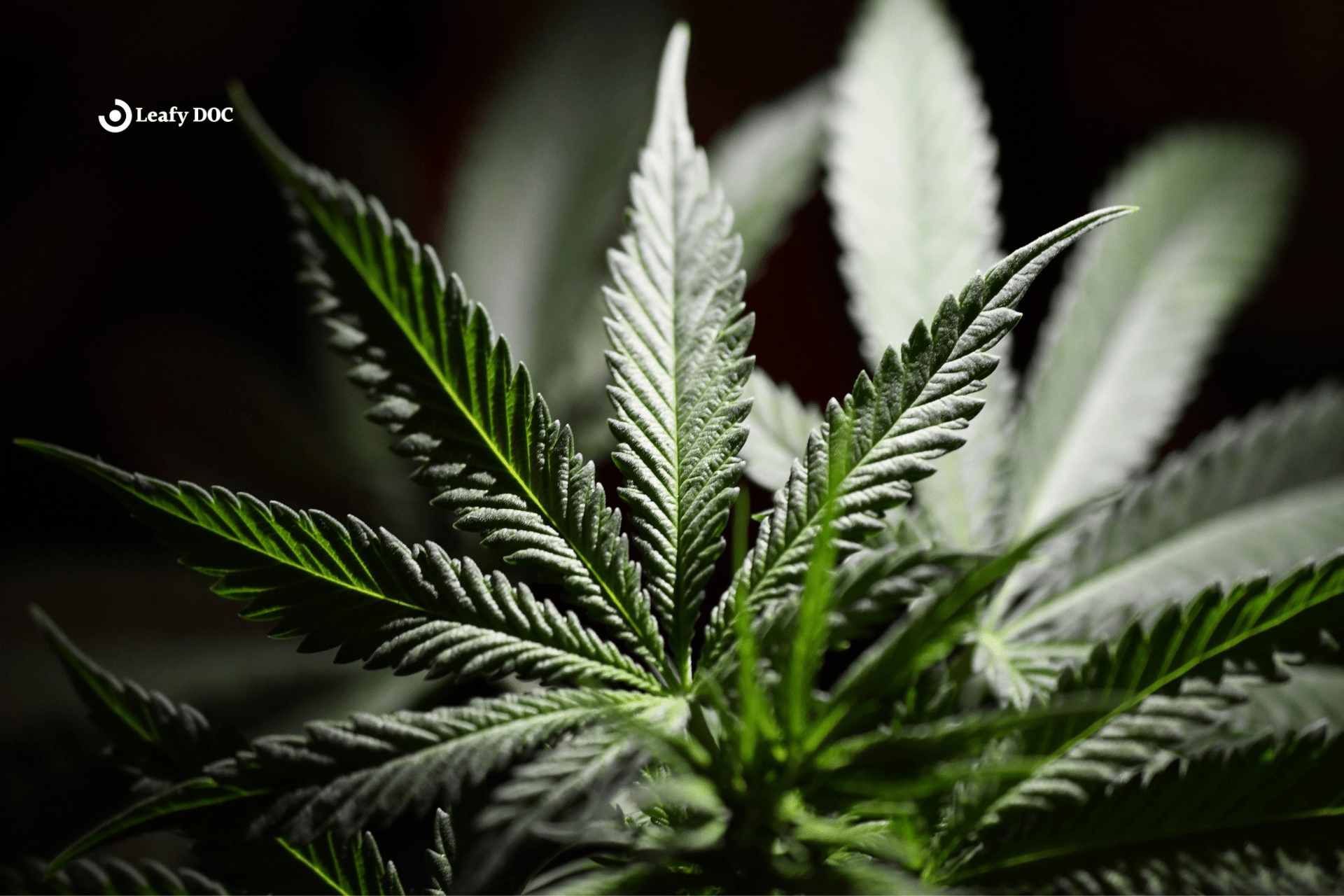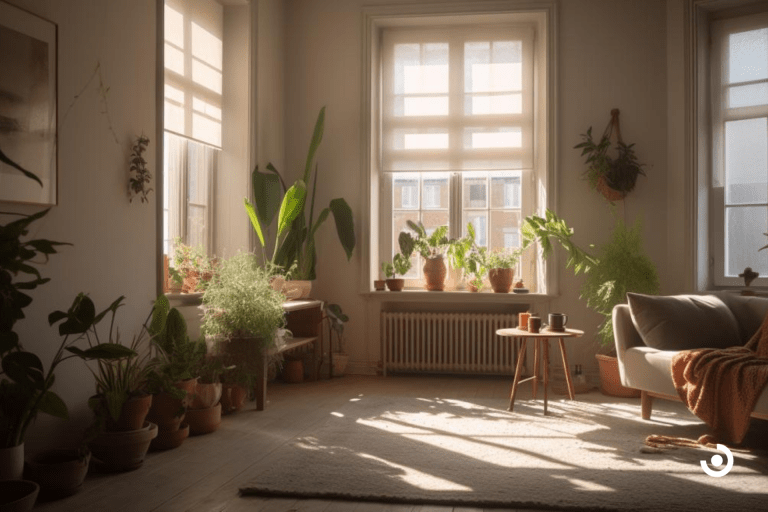The Anatomy Of A Marijuana Leaf
by Haley Mills · September 11, 2023
Discover the secrets of the marijuana leaf! Uncover its intricate structures and delve into the science behind this extraordinary plant.

Marijuana, also known as cannabis, has become a topic of widespread interest and debate in recent years. With the growing acceptance and legalization of marijuana in various parts of the world, there has been a surge in curiosity about its anatomy and physiological properties. One of the key elements of marijuana’s anatomy is its leaf structure, which plays a vital role in the plant’s overall growth and development.
When examining the anatomy of a marijuana leaf, several features stand out. The leaf is typically composed of various layers, each serving a specific function. These layers include the epidermis, mesophyll, and vascular bundle. Additionally, the leaf is characterized by a unique pattern of veins that transport water, nutrients, and sugars throughout the plant. Understanding the intricate details of a marijuana leaf’s anatomy can provide valuable insights into its growth patterns, as well as its potency and therapeutic potential. In this article, we will explore the anatomy of a marijuana leaf, including its structure, veins, trichomes, and the process of photosynthesis. We will also delve into the variations in leaf shape and size, and how these factors contribute to the overall characteristics of different marijuana strains. So, let’s dive into the fascinating world of marijuana leaf anatomy and unlock the secrets hidden within these green wonders.
Leaf Structure and Morphology
Now that you’ve grasped the basics of marijuana leaf anatomy, let’s dive deeper into its structure and morphology. The marijuana leaf comprises several key parts contributing to its overall function and appearance. At the most basic level, the leaf consists of a central vein, known as the midrib, which runs down the center and serves as the main support for the leaf. From the midrib, smaller veins branch out and form a network that delivers water and nutrients to the leaf cells.
The leaf is flat and thin, with a serrated edge characteristic of marijuana plants. The leaf is covered in tiny, hair-like structures called trichomes containing the plant’s resin glands. These trichomes produce the sticky resin containing the plant’s cannabinoids, such as THC and CBD. The shape and size of the leaf can vary depending on the strain and growing conditions, but they typically have a palmate or digitate shape, meaning they have multiple leaflets that radiate from a central point. This unique leaf structure allows for maximum exposure to sunlight, which is essential for photosynthesis and plant energy production. Overall, the structure and morphology of the marijuana leaf play a crucial role in its ability to thrive and produce the desired compounds.
Fan Leaves vs. Sugar Leaves: What’s the Difference?
Understanding the difference between fan leaves and sugar leaves can give you better insight into cannabis anatomy and cultivation.
Fan leaves are the large, familiar leaves that give cannabis its iconic look. Found along the branches, these broad, finger-like leaves are essential for photosynthesis. They don’t contain high levels of cannabinoids or trichomes, but they help fuel plant growth by absorbing sunlight.
Sugar leaves, on the other hand, are smaller and grow within the cannabis buds. These leaves are coated with trichomes—tiny resin glands that produce cannabinoids like THC and CBD. While sugar leaves are often trimmed during harvesting, they’re commonly used in edibles, concentrates, or sold as part of “shake” due to their high resin content.
Knowing the role of each leaf type can help cannabis users and growers alike make the most of every part of the plant.
Leaf Veins and Patterns
Explore the intricate network of veins and mesmerizing patterns that adorn a weed leaf. The veins of a marijuana leaf are an essential part of its structure, playing a crucial role in transporting water, nutrients, and sugars throughout the plant. These veins can be seen running along the length of the leaf, branching out in a complex pattern unique to each leaf. The veins themselves comprise bundles of xylem and phloem, which are specialized tissues responsible for the transport of fluids. The xylem carries water and nutrients from the roots to the rest of the plant, while the phloem transports sugars produced during photosynthesis to other parts of the plant for energy storage and growth.
In addition to their functional role, the veins of a marijuana leaf also contribute to its aesthetic appeal. The intricate patterns the veins create can be quite mesmerizing, with some leaves displaying symmetrical and repetitive designs, while others feature more chaotic and irregular patterns. These patterns are determined by the arrangement and density of the veins, as well as the varying sizes and shapes of the leaflets. The veins may be prominently visible, creating a stark contrast against the green background of the leaf, or they may be more subtle, blending in with the overall texture of the leaf. Regardless of their appearance, the veins add depth and character to the marijuana leaf, making it a visually captivating plant.
Leaf Trichomes and Their Functions
Leaf trichomes play a crucial role in the functions of cannabis leaves. Trichomes are tiny, hair-like structures that cover the surface of marijuana leaves. They are responsible for producing and storing essential oils and cannabinoids, such as THC and CBD, which are the active compounds found in cannabis. Trichomes are easily visible under a microscope or even with the naked eye, appearing as tiny, crystal-like structures.
One of the main functions of trichomes is to act as a defense mechanism for the marijuana plant. They help protect the plant from various threats, including insects, UV radiation, and extreme weather conditions. The sticky resin produced by trichomes contains chemicals that repel pests and prevent them from damaging the leaves. Additionally, the presence of trichomes on the leaves can help reduce water loss through transpiration, as they create a thin layer of insulation. This is especially important in arid climates where water conservation is crucial for plant survival.
In addition to their protective functions, trichomes also play a significant role in the production of cannabinoids. The essential oils and cannabinoids produced by the trichomes are responsible for the psychoactive and medicinal effects of marijuana. These compounds are produced in the resin glands found within the trichomes. The higher the concentration of trichomes on the leaves, the more potent the marijuana strain is likely to be. Therefore, trichomes are crucial for the plant’s overall health and protection and directly contribute to the potency and quality of the marijuana produced.
Photosynthesis in Marijuana Leaves
Photosynthesis in marijuana leaves is truly a remarkable process that fuels the growth and vitality of these magnificent plants. Like all green plants, marijuana leaves contain chlorophyll, the pigment that captures sunlight. When light energy is absorbed by chlorophyll, it is converted into chemical energy through a series of complex biochemical reactions. This chemical energy is then used to fuel the synthesis of glucose, a simple sugar that serves as the plant’s primary energy source.
During photosynthesis, carbon dioxide from the air enters the marijuana leaf through tiny pores called stomata. These stomata are mainly found on the underside of the leaf, allowing for efficient gas exchange. Inside the leaf, the carbon dioxide combines with water that is absorbed by the roots, forming glucose and oxygen. The plant uses the glucose for energy, while the oxygen is released back into the atmosphere as a byproduct.
In addition to producing energy, photosynthesis is also responsible for producing other vital compounds in marijuana plants, such as cannabinoids. These compounds are synthesized in unique structures within the leaf called trichomes, which we discussed in the previous subtopic. Without photosynthesis, marijuana plants would not be able to grow and thrive, making it a crucial process for their survival. Understanding the intricacies of photosynthesis in marijuana leaves can help growers optimize their cultivation practices and ensure the production of high-quality plants.
Variations in Leaf Shape and Size
Take a moment to notice the variations in shape and size of marijuana leaves, as they can range from long and slender to short and wide, creating a diverse and captivating visual display. These variations are influenced by several factors, including the strain of the plant, the environment in which it is grown, and the specific genetic traits of the plant. Some marijuana leaves may have a classic “finger-like” shape, with multiple serrated edges extending from a central stem. Others may have a more rounded shape, almost resembling a maple leaf. Additionally, the size of marijuana leaves can vary significantly, with some leaves reaching several inches in length, while others are much smaller and more compact.
The leaf shape and size variations can also impact the plant’s overall growth and health. For example, larger leaves with a larger surface area are typically better at absorbing sunlight and conducting photosynthesis, while smaller leaves may be more efficient at conserving water. The shape of the leaves can also affect how they interact with the surrounding environment, such as how they capture and disperse water droplets. Ultimately, the diverse range of leaf shapes and sizes in marijuana plants adds to the beauty and complexity of these plants, making them not only fascinating to study, but also visually striking in a garden or indoor growing space.
Frequently Asked Questions
How does the anatomy of a marijuana leaf affect the potency of the plant?
The anatomy of a marijuana leaf, including its shape, size, and the arrangement of its trichomes, can affect the potency of the plant. Trichomes, where cannabinoids are found, are more concentrated in certain areas, influencing potency.
Can the veins on a marijuana leaf indicate the strain or type of cannabis?
Yes, the veins on a marijuana leaf can indicate the strain or type of cannabis. Different strains have distinct vein patterns, such as the Indica strain having wider, more pronounced veins than Sativa strains.
Do trichomes on marijuana leaves have any medicinal properties?
Trichomes on marijuana leaves contain medicinal properties. These tiny, crystal-like structures are rich in cannabinoids and terpenes, responsible for the plant’s therapeutic effects. They play a crucial role in providing relief for various medical conditions.
Is there a correlation between the shape and size of marijuana leaves and the plant’s growth rate?
Yes, there is a correlation between the shape and size of marijuana leaves and the plant’s growth rate. Larger and broader leaves tend to indicate a faster growth rate, while smaller and narrower leaves suggest a slower growth rate.
Last Updated: June 25, 2025
Get Approved for Your Medical Marijuana Card in Minutes!

Get Your Medical Card
Connect with a licensed physician online in minutes

Like This Article?
Share with your friends
Table of Contents
Keep Reading
-
7 Steps to Obtain Your Free Medical Marijuanas Card VA
Simplify the process to obtain your free medical marijuana card in VA with these 7 steps.
-
5 Steps to Obtain Your Michigan Medical Marijuana Card
Learn how to obtain your Michigan medical marijuana card in 5 simple steps.
-
Maintaining Homeostasis: The Role Of The Endocannabinoid System
Learn how the endocannabinoid system maintains homeostasis in your body and uncover the secrets to perfect balance. Click here to unlock the key to ultimate well-being!



